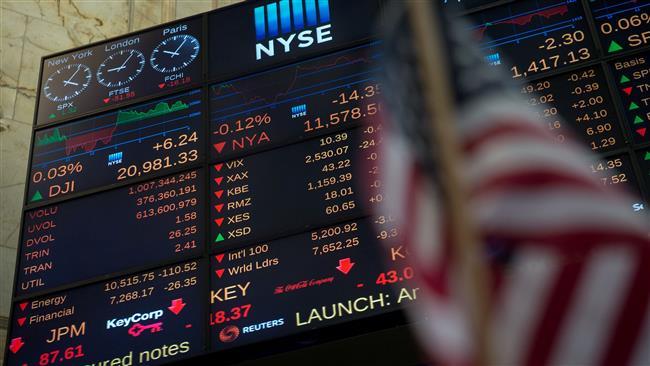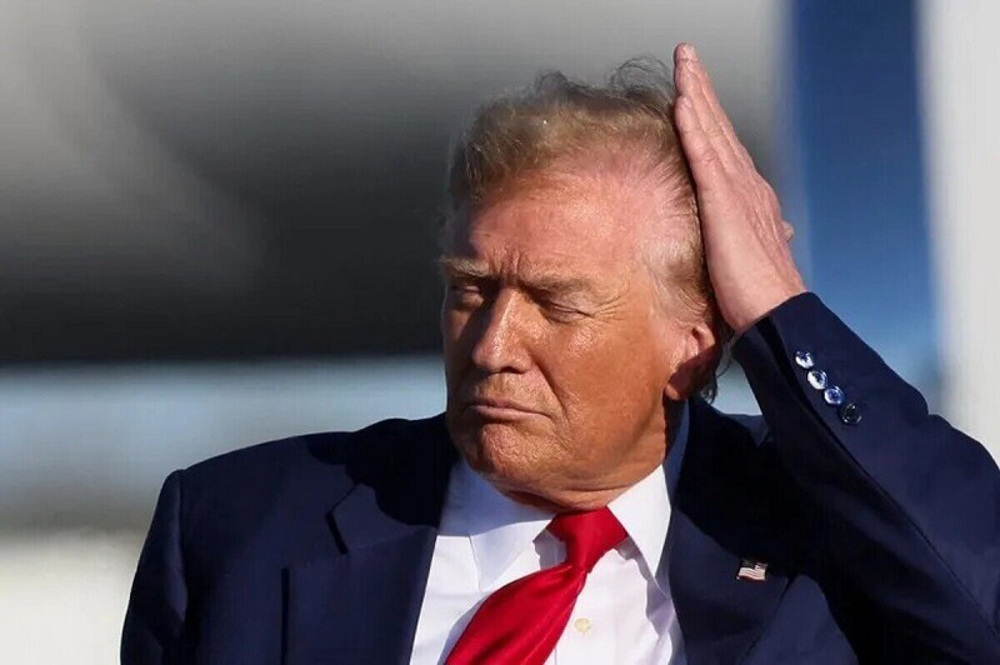US growth hits 3-year low in Trump's first quarter
US economic growth has sunk to its lowest level in three years, a disappointing start to Donald Trump's presidency on the eve of his first 100 days in office.
Gross Domestic Product (GDP) increased only 0.7 percent in the first three months of the year as consumer spending and government expenditures tumbled to their lowest levels in years, the US Commerce Department reported on Friday in its preliminary data.
Though only slightly below the 0.8 percent increase in the same quarter of last year, the result was down sharply from the 2.1 percent expansion seen in the fourth quarter of 2016.
It was well below analyst expectations for 1.1 percent GDP growth. The last time growth in the first quarter was more disappointing was the 1.2 percent drop in the 2014.
Trump, who hits his first 100 days in office on April 29, rose to power on a message of nationalist economic revival. He has also taken credit for increased consumer and business confidence, growing employment and record gains for stocks in recent months.
Record lows
The White House has been promising a return to three percent economic growth, which it says will generate the revenues needed to pay for the multi-trillion-dollar tax cuts unveiled this week.
Consumer spending fell to its lowest level in nearly eight years, adding only 0.3 percent, with spending on services at their lowest in four years, and durable goods orders their lowest since 2011, as auto sales fell 0.45 percent.
Defense spending contracted by four percent, its lowest pace in nearly three years, helping drive down overall government expenditures by 1.7 percent, the lowest quarterly result in almost four years.
Spending on non-durable goods also contracted 2.5 percent, the lowest reading since 2011.
Economists note that first quarters in recent years have trended below average.
Growth has averaged one percent in first quarters over the last seven years, well below average growth in other quarters, according to Jim O'Sullivan of High Frequency Economics. In addition, preliminary estimates of GDP are subject to revisions of an average of 0.6 points.
Analysts also cautioned that the most recent numbers may have suffered some distortion, with a rebound likely in the next quarter.

Unseasonably warm weather in the first two months of the year drove down spending on utilities, and delayed tax refunds also put less cash in consumers' pockets, all of which weighed on consumption.
Ian Shepherdson of Pantheon Macroeconomics said if these distortions were excluded, growth would probably have been closer to two percent. He said he expects three percent growth in the second quarter "as the statistical and weather issues unwind."
Business investments were a bright spot, increasing 4.3 percent for the quarter. But that was a significant slowdown from the brisk 9.4 percent in the prior quarter.
A recovery in oil prices helped sustain growth in this category, with mining, exploration, shafts and wells skyrocketing by 449 percent, an all-time record, up from 23.7 percent in the prior quarter.
"The health of business investment bolsters our confidence that the first quarter is a temporary slowing," Barclays economists said in a research note. "The rise in equipment investment indicates that firms are expanding capacity in anticipation of rising demand."
Employment costs mount
With the Federal Reserve holding its two-day monetary policy meeting next week, the weak growth figures were sure to figure into expectations for the pace of interest rate moves this year but a Labor Department report also released Friday pointed in a different direction from GDP.
The employment cost index rose 0.8 percent for the quarter-- which Shepherdson noted was the biggest gain in nearly a decade -- two tenths above an analyst consensus forecast.
"Fed hawks will seize on this report," Shepherdson said. "All the action in the headline ECI is due to a 0.9 percent jump in wages and salaries in the private sector."
This confirms anecdotal reports in the Fed's economic survey from companies that have been obliged to raise wages and benefits in an effort to attract qualified candidates to job openings.
(Source: AFP)
UN chief slams Israel for blocking utilities to UNRWA in Gaza
Israel launches airstrikes, artillery fire across Gaza on first day of 2026
VIDEO | Press TV's news headlines
Millions of Afghans face food insecurity
Israel killed 7,488 Palestinian students, educational staff during 2025
VIDEO | Festive celebrations held across China to welcome new year
Zohran Mamdani sworn in as first Muslim mayor of New York City
Putin reaffirms Russia’s resolve to win Western-backed war in Ukraine










 This makes it easy to access the Press TV website
This makes it easy to access the Press TV website